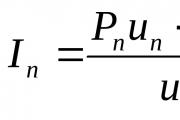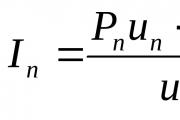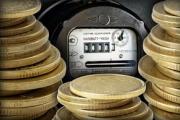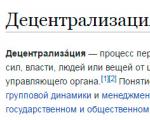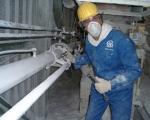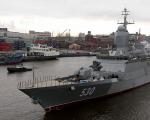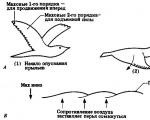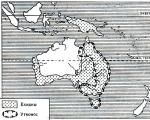- siblings, but not twins. The elder brother is strong and strong - the younger brother is thin and hard. Faience is rich in body and rough in appearance; porcelain is delicate in appearance and famous for its refined beauty. One of the brothers is dark by nature, but loves to decorate himself colorfully and brightly. The other one shines with light and prefers pastel colors. At the same time, both do not shy away from gold – and fame!
Faience and porcelain – noble ceramics
The result of a long, centuries-long selection of materials was the identification of optimal ingredients for the manufacture of high-quality ceramic products. Both earthenware and porcelain are made mostly from white clay, quartz sand and. Products made of porcelain and earthenware are most often covered with a glassy glaze. This is where the similarities end.
Differences between porcelain and earthenware
Visually distinguishing earthenware from porcelain is not always easy, but there is one immutable rule: good porcelain is translucent, faience - even the most expensive - is not! Unpainted areas of porcelain and earthenware differ not only in light transmission, but also in color. Porcelain is always whiter than earthenware! The difference is determined by the recipe: faience contains more clay, which darkens when sintered. However, there are certain varieties of earthenware, the whiteness of which can compete with the whiteness of porcelain due to additives and.
Earthenware dishes are usually thicker than their porcelain counterparts. Primarily because the strength of earthenware is lower than that of porcelain. The relative fragility of faience is explained by the lesser “baking” of its shard. Numerous pores penetrating the earthenware thickness and constituting up to 12% of the volume of ceramics reduce the resistance of the object to mechanical loads.
Porosity causes the ceramic mass to become wet. To reliably isolate earthenware from moisture, the glaze on the surface of the product is made with a layer thicker than that of porcelain. Thickened glaze smoothes the reliefs - that's why earthenware is simple in shape.
Faience and porcelain in the history of mankind
Earthenware is much older than porcelain. Porcelain itself can be considered as the most advanced type of earthenware: the initial components of these ceramic materials are the same, only the proportions differ.
The appearance of faience was a logical result of the improvement of primitive ceramics. Initially, clay products were fired in a fire or dried in the sun. Subsequently, glazes were invented that strengthened and decorated household products.

Ceramics, made from light clay and covered with a layer of glaze, began to be called faience in honor of the city of Faenza (province of Emilia-Romagna, Italy). Faenza manufactories became famous during the Renaissance - however, materials similar to modern faience were produced for a long time and everywhere, starting from Ancient Egypt and Ancient China, and ending with the most remote regions of the spread of civilization.
The invention of porcelain, associated with the discovery and development of deposits, spurred the growth in the quality of earthenware. It is safe to say: modern faience was born in attempts to reveal the secret of the porcelain recipe. This is a cause-and-effect paradox...
Artistic differences between porcelain and earthenware
Philosophy teaches: form and content are interconnected. Even insignificant - from the point of view of the average person - variations in the recipe of noble ceramics radically change the design of products for similar purposes. Are porcelain dishes richer in relief details than earthenware? This means that she does not need a lot of coloring. But the smooth contours of massive earthenware are like a primed canvas for a painter! Painting on faience has long become a separate variety visual arts. True, the golden details of artistic decor - strokes, ornamental stripes and solid edgings - look equally advantageous on porcelain and earthenware.
Earthenware or porcelain: which is better in everyday life?
A thin porcelain cup will decorate the tea table and help create a festive atmosphere. A thick-walled earthenware mug will keep your tea hot and give you the opportunity to feel the comfort of your home. Porcelain is expensive and therefore suitable for making designer jewelry and formal sets. Earthenware is cheap to produce and therefore is used much more widely than porcelain.

At the same time, porcelain is not afraid of heat and sudden temperature changes. In earthenware, such tests can cause cracking of the glaze with subsequent penetration of moisture into the shard. Strong coffee, poured into a faience cup with microscopic cracks in the glaze, will leave behind indelible marks...
Earthenware is not porcelain
It is also useful to confidently distinguish between earthenware and porcelain because both types of noble ceramics are collectibles. Physical properties:
- porcelain is whiter, earthenware is darker;
- porcelain is louder, earthenware is duller;
- porcelain is translucent, earthenware is opaque;
- porcelain is durable, earthenware is fragile.
Technological parameters:
- porcelain is dense, earthenware is porous;
- fused into a monolithic mass, sintered grains are observed in the structure of the earthenware;
- porcelain is covered with a thin glaze, earthenware glaze is thicker and not always uniform;
- Porcelain tableware has an unglazed rim on the bottom. Earthenware dishes are most often completely covered with glaze.
Artistic Features:
- Porcelain figurines are beautiful with elaborate details and amaze with the subtlety of plasticity. Earthenware objects are less intricate in shape;
- The color range of earthenware products is rich in colors thanks to painting on top of the glaze. Artistic porcelain is usually not so flowery;
- porcelain does not age. Over the years, earthenware becomes covered with a network of small cracks (craquelure) - which does not in any way affect the value of antique earthenware.
Price qualities:
- porcelain serial production more expensive than mass-produced faience;
- porcelain antiques are not necessarily more expensive than rare earthenware.
Instead of a conclusion
It is impossible to draw a clear boundary between earthenware and porcelain. Materials science calls both types “ceramics,” and the production features of some types of earthenware bring the material so close to porcelain that visual differences become difficult to determine. (this porcelain is called feldspathic). The term “porcelain” in English-language literature is often applied to technical ceramics: zircon, alumina, lithium, bornocalcium and other porcelain, which reflects the high density of the corresponding special ceramic material.
Porcelain is also differentiated depending on the composition of the porcelain mass. soft And solid. Soft porcelain is different from hard not by hardness, but by the fact that when firing soft porcelain, more liquid phase is formed than when firing hard porcelain, and therefore there is a higher risk of deformation of the workpiece during firing.
Hard porcelain
Methods of decorating porcelain
Porcelain is painted in two ways: underglaze painting and overglaze painting.
In underglaze painting of porcelain, paints are applied to unglazed porcelain. The porcelain piece is then coated with a transparent glaze and fired at high temperatures of up to 1350 degrees.
Decorative porcelain. Uzbek tea set
The palette of colors for overglaze painting is richer; overglaze painting is applied over glazed linen (the professional term for unpainted white porcelain) and then fired in a muffle furnace at a temperature of 780 to 850 degrees.
During firing, the paint fuses into the glaze, leaving behind a thin layer of glaze. After a good firing, paints shine (except for special matte paints used only for decorative purposes), do not have any roughness and in the future better resist the mechanical and chemical effects of acidic food products and alcohol.
Among the paints for painting porcelain, the group of paints prepared using noble metals stands out. The most common paints using gold, platinum and silver paint (or Argentine).
Gold paints with a lower percentage of gold content (10-12%) are fired at a temperature of 720 to 760 degrees (bone china is fired at a lower temperature than solid - "real" - porcelain). These paints are more decorative, and products decorated with them cannot be subjected to mechanical impact (wash with abrasive agents and in the dishwasher.) Gold and silver chandeliers, polishing polish and powdered gold and silver (50-90 percent) are fired at a higher temperature along with paints . Polishing polish and powdered gold after firing have a matte appearance and are marked with an agate pencil (the pattern is applied approximately like a simple pencil on paper, only you cannot make a mistake with shading the pattern, since this cannot be corrected in any way. The master in this case must be very highly qualified) Combination matte and shiny after gold zitting creates an additional decorative effect on porcelain. Chandeliers and gold powder paints are more durable on porcelain than 10-12% gloss. However, in the entire history of the creation of porcelain and its technologies, nothing better and cheaper than decorating porcelain with gloss has been invented.
Professional overglaze painting is carried out using gum turpentine and turpentine oil. The paints are pre-soaked on the palette for a day or more. After work, they are thoroughly rubbed with the addition of turpentine oil. Turpentine in jars should be dry, slightly greasy (turpentine gradually changes from one state to another). The oil should also be more fluid and thicker. To work, take a piece of soaked paint, add oil and turpentine - and dilute the mixture to the consistency of thick sour cream. For brush stroke painting, the paint is diluted a little thicker, for pen painting - a little thinner.
It is important that the paint does not bleed from under the pen or brush. Underglaze paint is diluted with water, sugar with the addition of a small amount of glycerin.
Story
Porcelain was first produced in China. The method of its manufacture was kept secret for a long time, and only in the city did the Saxon experimenters Tschirnhaus and Böttger manage to obtain European porcelain.
Attempts to discover the secret of Oriental porcelain continued for almost two centuries in Italy, France and England. However, the result was materials that vaguely resembled porcelain and were closer to glass.
Johann Friedrich Böttger (1682-1719) began to conduct experiments in the creation of porcelain, which in 1707/1708 led to the creation of “rothes Porcelain” (red porcelain) - fine ceramics, jasper porcelain.
However, real porcelain had yet to be discovered. Chemistry as a science in its modern understanding did not yet exist. Neither in China or Japan, nor in Europe could the raw materials for the production of ceramics be determined in terms of chemical composition. The same applied to the technology used. The process of porcelain production is carefully documented in the travel accounts of missionaries and merchants, but the types of porcelain used could not be inferred from these reports. technological processes. Known, for example, are the notes of the Jesuit priest Francois Xavier d'Entrecol (English) Russian , containing the secret technology of producing Chinese porcelain, made by him in 1712, but which became known to the general public only in 1735.
Understanding the basic principle underlying the porcelain production process, namely the need to fire the mixture various types soils - those that are easily fused and those that are more difficult to fusion - arose as a result of long systematic experiments based on experience and knowledge of geological, metallurgical and “alchemical-chemical” relationships. It is believed that the experiments to create white porcelain were carried out simultaneously with the experiments to create "rothes Porcelain", since just two years later, in 1709 or 1710, white porcelain was already more or less ready for production.
It should be noted that Chinese porcelain, from a modern point of view, is soft porcelain, since it contains significantly less kaolin than hard European porcelain; it is also fired at a lower temperature and is less durable.
Experts and scientists from various specialties worked together with Böttger to create solid European porcelain. European hard porcelain (pate dure) was a completely new product in the field of ceramics.
At the end of December 1707, a successful experimental firing of white porcelain was carried out. The first laboratory notes on usable porcelain mixtures date back to January 15, 1708. On April 24, 1708, an order was given to create a porcelain manufactory in Dresden. The first examples of porcelain fired in July 1708 were unglazed. By March 1709, Böttger had solved this problem, but he did not present glazed porcelain samples to the king until 1710.
In 1710, at the Easter fair in Leipzig, salable "jasper porcelain" tableware was presented, as well as examples of glazed and unglazed white porcelain.
In Russia, the secret of producing hard porcelain was rediscovered by Lomonosov's associate D.I. Vinogradov in the late 1740s. The manufactory in St. Petersburg where he worked eventually became the Imperial Porcelain Factory, better known in the USSR under the abbreviation LFZ.
The world's largest private collection of Soviet porcelain belongs to lawyer Alexander Dobrovinsky, and was exhibited in five halls of the Pushkin Museum.
see also
Notes
Literature
- // Encyclopedic Dictionary of Brockhaus and Efron: In 86 volumes (82 volumes and 4 additional ones). - St. Petersburg. , 1890-1907.
- Porcelain and earthenware production technology, M. , .
Links
Wikimedia Foundation.
2010.:
Synonyms
See what "Porcelain" is in other dictionaries: - (Turkish farfur, fagfur, from Persian fegfur), fine ceramic products, sintered, impenetrable to water and gas, usually white, ringing, translucent in a thin layer, without pores. Porcelain appeared in China in the 4th–6th centuries: elongated slender vessels with... ...
Art encyclopedia PORCELAIN, a white, glassy, non-porous, hard, translucent ceramic material. Porcelain is widely used for tableware, decorative items, laboratory equipment, and electrical insulators. Porcelain appeared... ...
Scientific and technical encyclopedic dictionary - (Turkic). 1) the title of the Chinese emperor among the Arabs. 2) a type of clay used to make the best dishes. Dictionary of foreign words included in the Russian language. Chudinov A.N., 1910. PORCELAIN is the highest grade of earthenware, has hardness,... ...
Dictionary of foreign words of the Russian language Modern encyclopedia
- (Turkish farfur fagfur, from Persian), ceramic products (dishes, vases, figurines, architectural details, insulators, chemical equipment, etc.), obtained by sintering porcelain mass (from plastic refractory clay, kaolin, feldspar, ... ... Big Encyclopedic Dictionary
The dishes are made from the most different materials- glass, ceramics, wood, earthenware, porcelain and even plastic. The most popular products are those made from porcelain, earthenware and ceramics. Many people are interested in the question of how to distinguish these materials from each other, and this is not difficult to do.
China
Faience and porcelain - differences between materials: - Porcelain is a ceramic material that is impermeable to air and water, but at the same time has a slight thickness. What is ceramics? The answer is simple - it is a material that is produced by sintering clay with some mineral additives. As for the porcelain itself, its main components are considered to be kaolin (clay), feldspar, etc. The porcelain item has a perfect white color. It is impossible to see pores on the surface of porcelain, since there are none. This ensures the strength of porcelain, making it an ideal raw material for the production of tableware.
- Earthenware is a material that resembles porcelain in its properties, however earthenware product, unlike porcelain, will have small pores. What is the difference between porcelain and earthenware? The latter absorbs a certain amount of moisture (about 12%), while this property is not typical for porcelain. Earthenware consists of 85% clay, which explains the material’s ability to absorb water. It is for this reason that all earthenware products are covered with glaze.
Porcelain and faience: types
Before you figure out how to distinguish porcelain from earthenware, you should learn about the types of these materials. There are the following types of porcelain:
- Hard: produced by double annealing at temperatures ranging from 1350 to 1450 degrees, resulting in a super-strong material for making cookware. Conventionally, hard porcelain is divided into the following types: household, electrical, chemical and artistic. As for the groups of hard porcelain, they can be divided into European (clay predominates in its composition) and Oriental (it is fired with a more gentle fire). temperature conditions, and porcelain itself contains less kaolin).
- Soft: this porcelain is obtained by firing at temperatures up to 1350 degrees. Its color and characteristics are in many ways reminiscent of hard porcelain, but the soft material is more susceptible to temperature changes. All soft porcelain is divided into European, French and English.
As for faience, it comes in:
- alumina;
- fireclay;
- limestone;
- feldspar.
It is no secret that porcelain is more expensive than earthenware, which is what unscrupulous sellers of products made from these materials take advantage of. In order not to fall for the tricks of deceivers, you should find out how these types of raw materials for the production of tableware may differ.

Faience swan
Differences
Porcelain or earthenware - how to distinguish them:
- You should take the product (it could be a mug, plate, figurine, etc.) and pay attention to its rim. If the edge that is not covered with glaze is white, then there is a high probability that the product in question is made of porcelain.
- The test item should then be held up to the light. If it is translucent, this indicates that porcelain was used to make it. As for faience, it does not have such a characteristic. If you are checking a voluminous product, you should pay attention to its bottom. The absence of glaze on it will indicate that the product is made of porcelain.
- You should take the product and lightly hit it with a metal object. Porcelain will produce a clear and ringing sound. As for earthenware, the sound emanating when you hit it will be muffled.
- Over time, earthenware may lose its attractiveness - cracks form on products made from such material. This phenomenon is not typical for porcelain.
- You can estimate the weight of the product. If it is small, but quite heavy, then this will indicate that the product is made of earthenware.
- Products made from real porcelain are not painted, as it distorts the natural white color of the material. Almost all earthenware dishes are colored and variegated.
Dishes and decorative items made of porcelain, unlike earthenware, have a high cost. To avoid mistakes when purchasing porcelain products, preference should be given to products offered under well-known brands.
Ceramics is a category of materials that includes porcelain and earthenware. These are two similar firing products, similar in appearance, but at the same time fundamentally different in physical qualities. What are these differences?
Porcelain
Any ceramic product is obtained by high-temperature sintering of clay (its mixtures) with mineral additives and inorganic components. If the sintering process involved a mixture of plastic clay, kaolin (white clay), quartz and feldspar (silicate) with an equal or greater percentage of mineral content, then the result of firing is porcelain. This is a highly durable, non-porous, thin, translucent (if porcelain is held up to the light, it will be translucent), thermally resistant material, distinguished from others by its light weight.
Porcelain figurine
Faience
But if a mixture of clay (80-85% of the total mass), quartz, feldspar and a small amount of kaolin was involved in the process of sintering ceramics, then the result of firing is earthenware. This is a finely porous material, fired at temperatures up to 1280°C. The presence of pores makes faience a more fragile, rough and water-absorbing (about 12%) material, which must be covered with a thick layer of glaze in order to eliminate imperfections. It is heavy, has a matte finish and is opaque.
 Crockery
Crockery Differences
Depending on the proportions of the mixture components listed above, technologists can obtain soft and hard porcelain. Products made from soft porcelain are fired in a kiln at a temperature below 1350°C, and from hard porcelain - at 1350°C - 1450°C. The soft variety is more fragile and sensitive to sudden temperature changes; it is conventionally classified as porous ceramics (the presence of a small number of small pores is observed), the glaze of which is destroyed by mechanical stress. Because of these physical characteristics, soft porcelain is used to make only valuable pieces of art, not tableware.
Hard porcelain contains up to 66% kaolin (but not less than 47%). This variety is a dense, non-porous ceramic, which makes it more resistant to physical impact. The material is also transparent, “weightless”, and has a smooth white surface. Solid varieties are used for the production of dishes, decorative items (vases, dishes), electrical insulators and even plumbing fixtures. But there is also a special material “biscuit” - a hard type of porcelain that is not covered with glaze. It is a matte material used for making sculptures and jewelry.
Any porcelain mass is always white, since when adding dyes to the mixture it is impossible to achieve the required transparency, thinness and at the same time strength of the material. All colored products are painted with special glaze paints after firing. Porcelain “sounds high” when struck lightly.
The mass for making earthenware is white, but often colored dyes are added to it, which allows you to make products of any shade. In addition, silicon, quartz, lime, feldspar or fireclay, magnesium, and carbon dioxide can be added to the mixture. Depending on the components, varieties are distinguished, for example, alumina and lime faience. They also affect the quality of the material, its porosity, fragility, and water absorption. Due to the wealth of varieties of material, earthenware is used to produce dishes, tiles, tiles, figurines, and so on.
Conclusions website
- Porcelain has unique and valuable decorative characteristics.
- Earthenware absorbs moisture, which makes it very sensitive to temperature changes and less hygienic.
- Porcelain is lighter and at the same time mechanically stronger than earthenware.
- Earthenware is less valuable because the production process is less labor intensive and the materials used are not as expensive.
- Faience is more practical and decoratively diverse than porcelain.
Products made from these ceramic materials almost always surround a person. They often delight the eye with their sophistication and ease of use. However, many do not fully understand what their differences are despite their external similarity.
Ringing and transparent
This type of pottery is made by exposing a very finely ground mixture of white clay called kaolin, plastic clay, feldspar and quartz to high temperatures. If you lightly hit a porcelain cup with a wooden shelf, it will ring with a clear, high-pitched sound of varying tones. The wall of such dishes will be translucent.

It is known that porcelain has Chinese origin. It was first received in the middle of the first millennium. The local porcelain production masters strictly guarded its secrets. For hundreds of years, Europeans struggled to solve it, until Meissen porcelain was experimentally obtained at the beginning of the 17th century. For a long time, neither in the East nor in Europe could they determine chemical composition porcelain raw materials and technological subtleties of its production.

Later, porcelain began to be divided into hard and soft. The first is a homogeneous white mass, which is fired at 1350-1450 °C. This procedure is carried out first at a low firing temperature limit. Then glaze is applied to the product, after which firing is carried out at the upper temperature limit. This type of porcelain contains more kaolin and less feldspar. It has no pores, is distinguished by its high strength, heat resistance and whiteness. It is classified as dense ceramics and is used mainly in the manufacture of dishes.

It is usually glazed, but there is porcelain called bisque that does not undergo this operation. A special type of hard porcelain is porcelain invented in England, called bone. It received this name because up to half of its composition is calcium phosphate, contained in the bones of cows. This is a very fragile material of exceptional whiteness and translucency, from which it is mainly made art products. In addition to tableware and decorative purposes, hard porcelain is used for the production of electrical insulators and laboratory glassware.
There is also soft porcelain or semi-porcelain, which is fired at a temperature lower than the lower firing threshold of hard porcelain. Outwardly, it is similar to hard porcelain, but is sensitive to temperature changes and mechanical stress. It is usually used to create highly artistic sculptures. Chinese porcelain, which contains less kaolin, is also such porcelain. Typically, porcelain products are coated with a glaze, which can be poured onto the painted surface or paints can be applied to it, which are then baked into the glaze.
Porous and opaque
Earthenware, which is close to porcelain, is used for the production of inexpensive dishes, sanitary ware, facing tiles, parts decorating architectural objects, etc. To make products from it, the same components are used as for porcelain, but in a different ratio. Of these, approximately 85% is clay. Its firing temperature from 1050 to 1280°C. Inside it is finely porous and dense, usually white. The porosity can reach contributes to its water absorption, which can reach 12%. Therefore, earthenware is covered with transparent or opaque glaze. He also came from the East.

Products imported from Iran, painted with cream glaze and colored enamels, were extremely popular. Starting from the 16th century, faience began to be produced in France, then spread to England, Germany and Russia. Faience was used for artistic purposes. It was painted with enamels, decorated with reliefs and covered with colored glazes<. src="https://vchemraznica.ru/wp-content/uploads/2017/02/taar268.jpg" alt="Faience plates" width="472" height="490" class="aligncenter size-full wp-image-9880" srcset="https://vchemraznica.ru/wp-content/uploads/2017/02/taar268-289x300.jpg 289w, https://vchemraznica.ru/wp-content/uploads/2017/02/taar268.jpg 472w" sizes="(max-width: 472px) 100vw, 472px">
In the territory Russian Empire Earthenware began to be produced in the 19th century. Several earthenware factories were launched. There are up to a dozen such enterprises operating in modern Russia. Largest producers porcelain and earthenware in the world are located in Great Britain, Germany, France and Japan. The principle of earthenware production has remained the same, taking into account changes caused by technical progress. Earthenware products are most often prepared by pouring a semi-liquid mass of raw materials into disassembled molds.
Custom and artistic products are molded by hand. Dried in special chambers, they undergo cleaning and straightening procedures. After this, they are placed in closed fireproof molds and fired. Firing takes place in two stages. First it is done to form a shard. Then a layer of glaze is applied to the product, which melts during firing. After cooling, a glassy surface sintered with the shard is obtained. Earthenware, which is intended for plumbing and electrical needs, is fired once.
What is the difference
- Porcelain differs from earthenware primarily in its composition, which ensures its glass-like appearance. It contains less plastic clay and more quartz and feldspar. 85% of the composition of faience is clay.
- Porcelain has a much higher firing temperature.
- Porcelain is resistant to liquids. Unglazed earthenware can absorb water.
- The mechanical strength of porcelain is significantly higher than that of earthenware.
- Porcelain shines through in the light; light does not pass through earthenware.
- When you tap the porcelain, a clear ringing sound is heard. In faience it is deaf.
- Porcelain retains its qualities for centuries. Over time, cracks form on the surface of earthenware.
- If you take two porcelain and earthenware products of the same shape and wall thickness, then the porcelain one will be lighter.
- The unglazed parts of porcelain dishes are white, while those of earthenware can be beige.
- Porcelain products are usually white and can be painted. The same objects of other colors are most likely earthenware.




 Crockery
Crockery 






